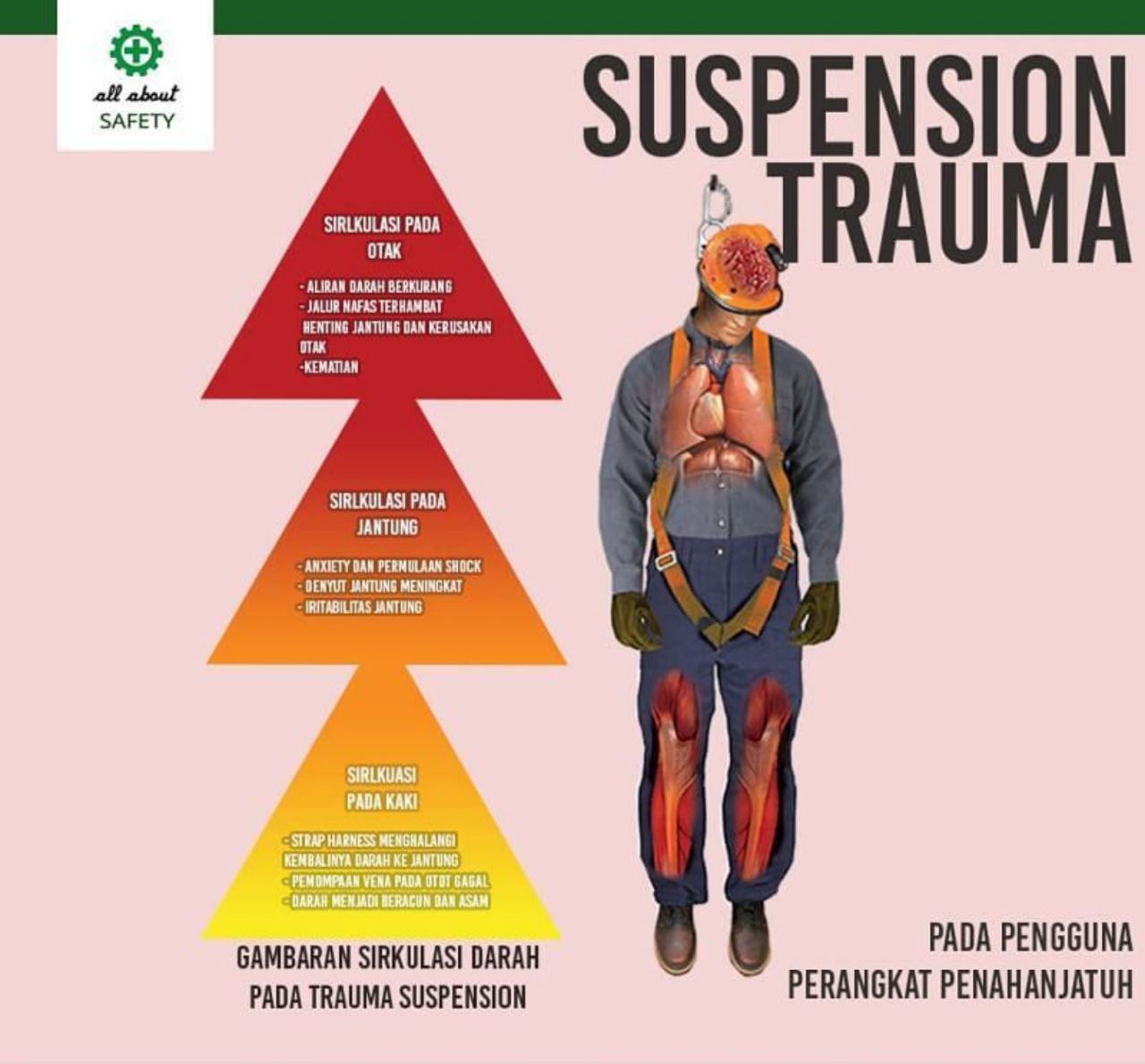Suspension trauma

Introduction
In fall protection, one of the methods for protecting workers from a fall is fall arrest. Fall arrest uses personal protective equipment (PPE), including a fall protection harness and attached lanyard that is used to connect a worker to an anchor point. With this gear, should the worker fall, the energy of the fall is absorbed by the lanyard and the worker is prevented from hitting the ground. However, once the fall has been arrested and the worker stopped, he is still left suspended in his fall protection harness. During this time in suspension, the most subtle and sinister hazard in fall protection, suspension trauma, begins to set in.
In this article the chemistry and physiology of suspension trauma will be explored, both during suspension and after the fall victim is brought down to the ground, and also ways to protect against this hazard. For safety specialists, especially those writing fall protection plans, this information is important to understand so that the hazard can be mitigated and rescue properly planned. For emergency medical personnel responding to a rescue of a suspended worker, knowing the physiology behind suspension trauma is key in providing proper treatment to the fall victim.
What is Suspension Trauma?
Suspension trauma, also known as harness hang syndrome and orthostatic intolerance, occurs after a worker has fallen into a fall arrest harness and is suspended in a hanging position until rescue arrives. When hanging in a fall harness, the leg straps support the body’s weight. During this time, the leg straps of the fall protection harness crush the femoral arteries on the inside of the legs, cutting off blood circulation.
By : Spencer Lane